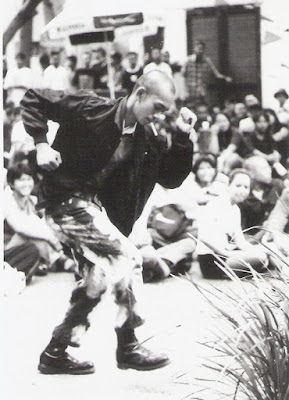Growing Up During 90s' TV When James Lye And Gurmit Were Still Under One Roof
Our latest article features a journey back to Singapore TV in the 90's. This article is written by one of our newer Nostalgic Singapore members, David BK Tan.
Fellow Singaporeans, do you realise the above title contains two of Singapore's more popular drama series - "Growing up" and "Under One Roof"? No? No worries, let me walk you down the TV memory lane.
English drama started its run in 1994. The first series was "Masters of the Sea" but unfortunately the first ship to foray into the English drama sea sank. It was criticised for the inaccurate wardrobe and unimaginative lines such as “I will crush you, like a cockroach”. Perhaps one of the reasons could be the unfamiliarity of the local environment as the producers and story writers were Americans (source).
But one trivia arising out of this flop was the debut of Bryan Wong, who crossed over to Channel 8 thereafter to seek better opportunities. Now he is back to Channel 5 hosting programmes, thus epitomises the saying "If at first you don't succeed, try, try again".
The next home-made series fared better. "Under One Roof" centred around a family's life in an HDB flat, spanned seven seasons from 1995 to 2003 with 125 episodes. It was truly a multi-racial cast, and some of the names in the series still sound familiar - Tan Ah Teck (Moses Lim). Ronnie (Nicholas Lee) , Rosnah (Norleena Salim) etc. Some of you might still remember the tagline from Tan Ah Teck -“Long before your time, in the southern province of China…”.
1995 also saw the debut of the police drama "Triple Nine". The first season starred James Lye, Wong Li Lin and Lim Yu Beng. It was quite a success with a run of 4 seasons from 1995 to 1999. The success of this series also made it possible to do the cross-over to Channel 8, with the dialogue being dubbed into Mandarin.
"Growing Up" was the first successful family drama in Singapore's TV history. Helmed by the veteran actor Lim Kay Tong and the up-and-coming starlets Andrew Seow, Steven Lim, Irin Gan, and Jamie Yeo; the series depicted the growing-up years of these four under their disciplinarian father (Lim KT). Lim KT's excellent portrayal of the role of family patriarch led him to be named by the Straits Times as one of the top ten dads on TV in 2013. The series spent six seasons on local TV screen from 1996 to 2001 with 113 episodes.

The quintessential local drama must be "Phua Chu Kang Pte Ltd" in 1997. Starring the larger-than-life Gurmit Singh and flanked by his able co-stars such as Irene Ang, Pierre Png, Tan Kheng Hua etc; the show used a dose of Singlish and exaggerated characterisation to make it a hit. It also churned out the best tagline in local TV so far "Best in Singapore, JB, and some say Batam.” which PCK aka Gurmit always reminded the viewers.
In fact, the name of Phua Chu Kang is already a funny name. Chu Kang (厝港) is a familiar area name in Singapore (Lim Chu Kang, Chua Chu Kang) and it means house along the river in Teochew dialect. Phua (破) means broken, so Phua Chu Kang literally means a broken house along the river. As PCK is a building contractor, doesn't it sound funny in a contradicting manner? Thumbs up for the creativity juice of the scriptwriters.
No wonder PCK is MediaCorp’s longest running sitcom, spanning eight seasons from 1997 to 2007 with 167 episodes.

If anything, sci-fi is clearly not one of the strengths of Singapore television. The superhero drama "VR Man" aired in 1998, could only save itself one season despite having James Lye as the lead actor. Not even the charismatic super powers of James Lye could rescue it. By the way, VR stands for Virtual Reality, not Very Rotten!!
The next series was actually not in my memory bank and I only came across it whilst doing a research on this article. Debuting in 1999, "Spin" was the first English teen drama which revolved around the lives of a group of polytechnic students. The cast included Madaline Tan, Elaine Cheah, Rodney Oliverio and Melody Chen. It only spun for 17 episodes.
Finally we have come to the conclusion of my article here. We certainly had a good dose of TV entertainment during the 90s, and with Singapore celebrating its golden jubilee of 50 years of independence in 2015, here's wishing more good TV in the next 50 years to come!
About the writer:
After falling in love with IT for about 12 years, David BK Tan decided to part amicably with her and woo Mr Entrepreneurship and Ms Mandarin thereafter. He is a web entrepreneur, founded a wine cooler website (www.dunavoxasia.com) and concurrently teaching foreigners Mandarin. You can read his posts on China/Mandarin at https://www.facebook.com/MrChinaBoleh.


















































